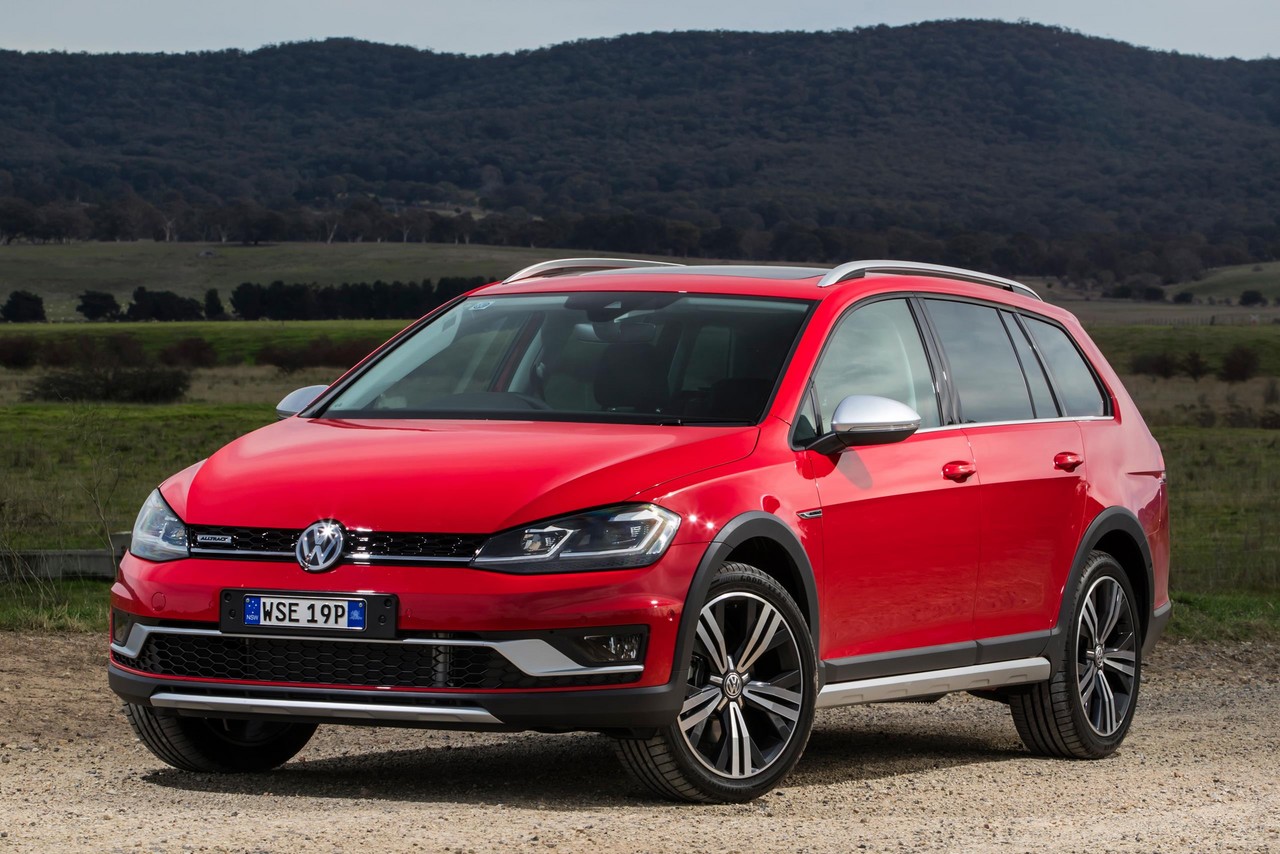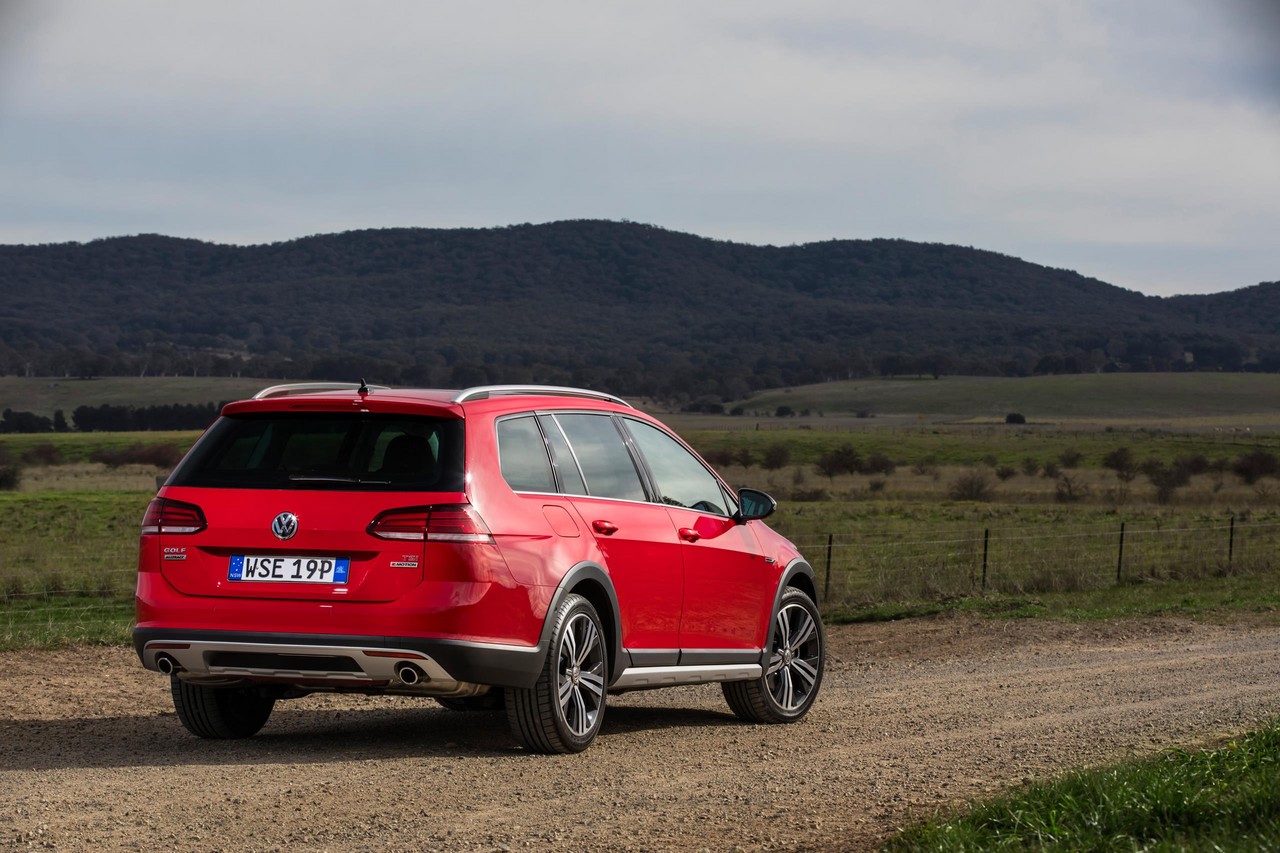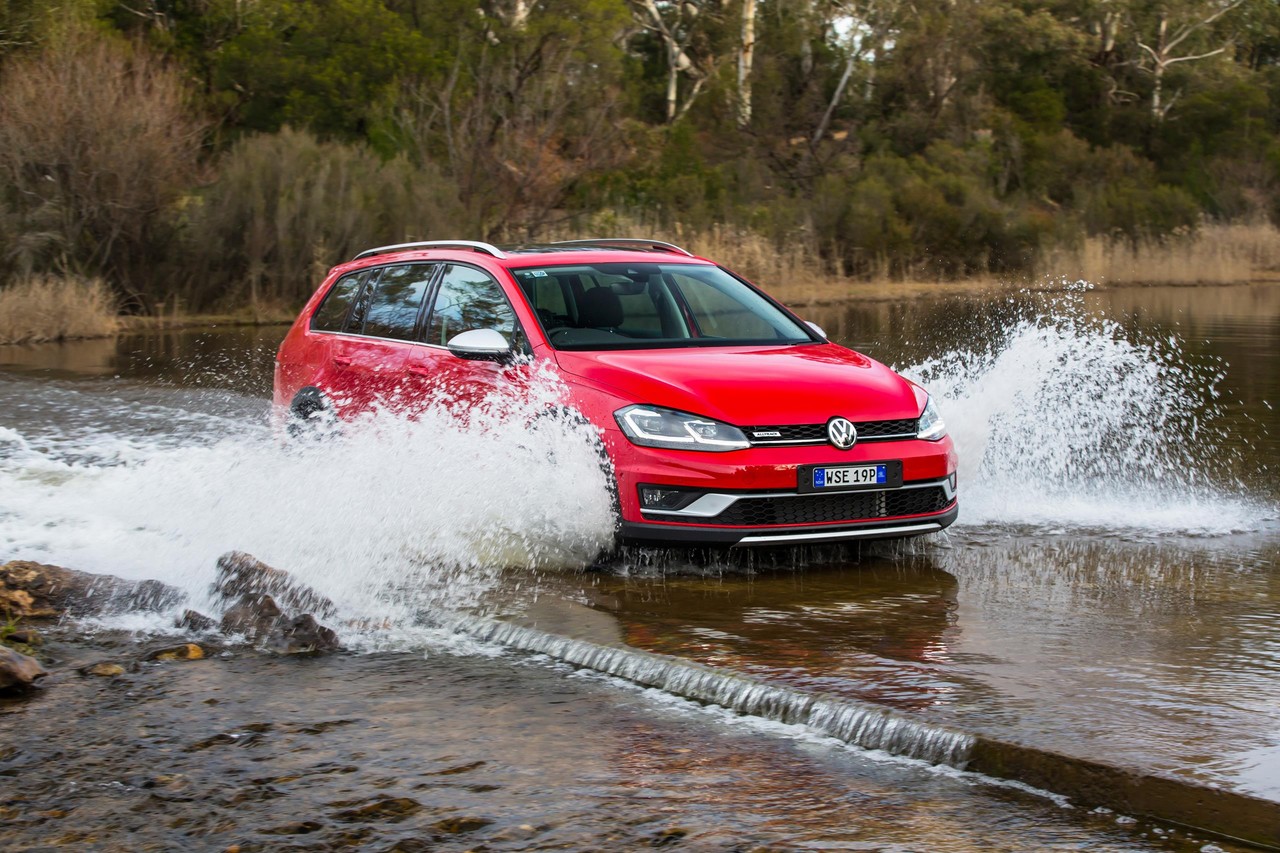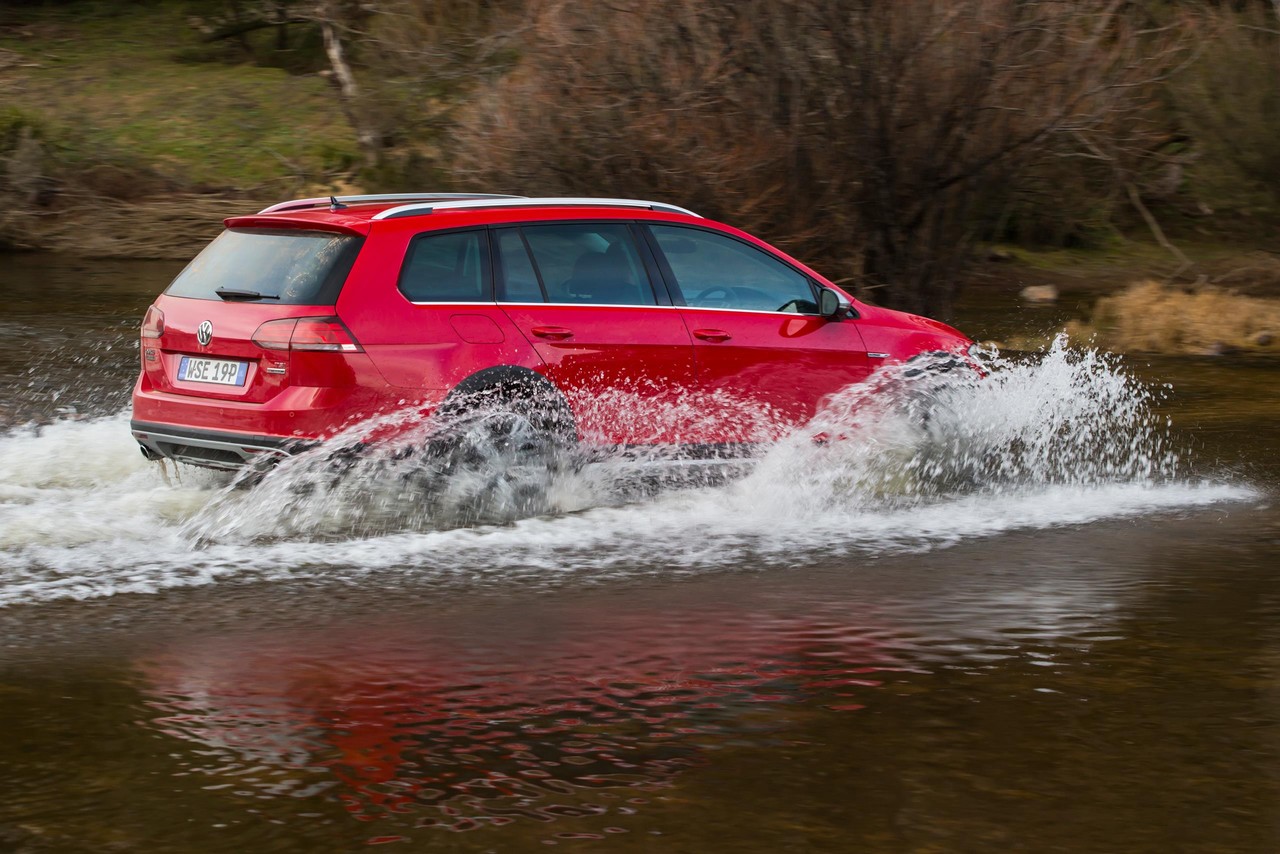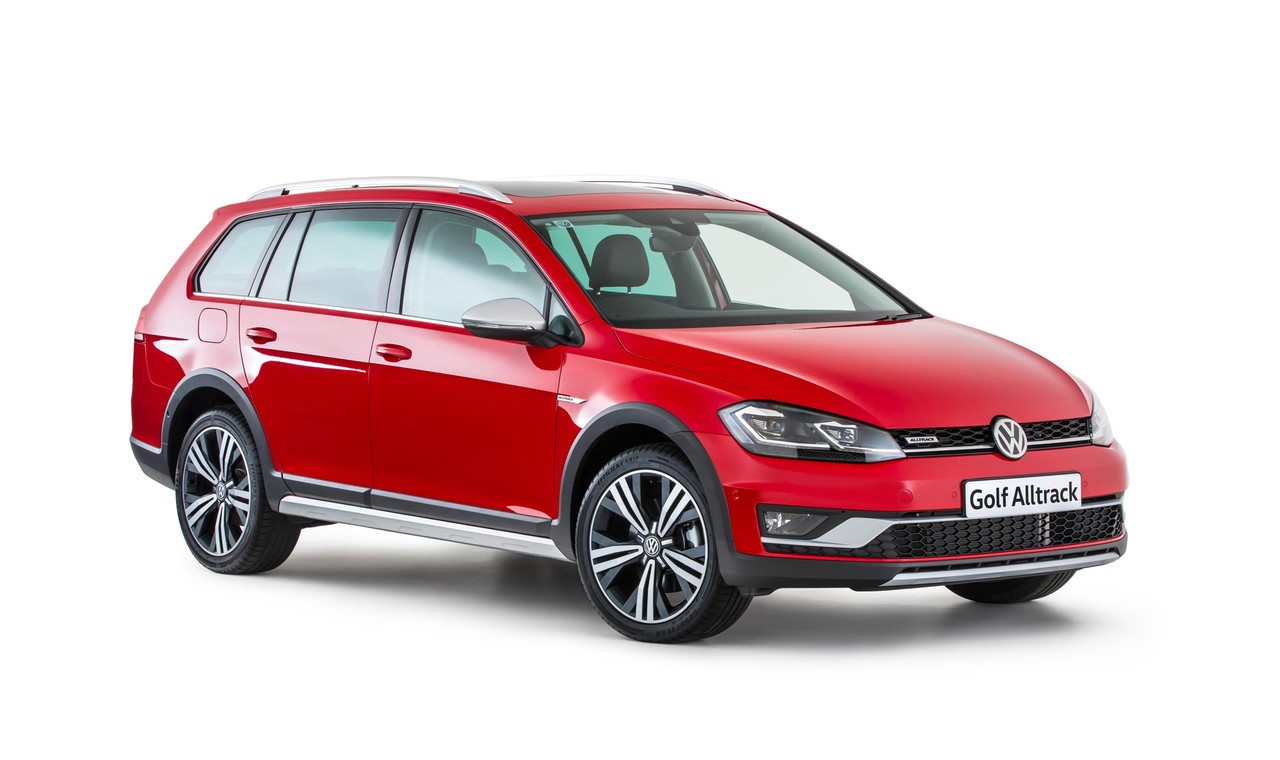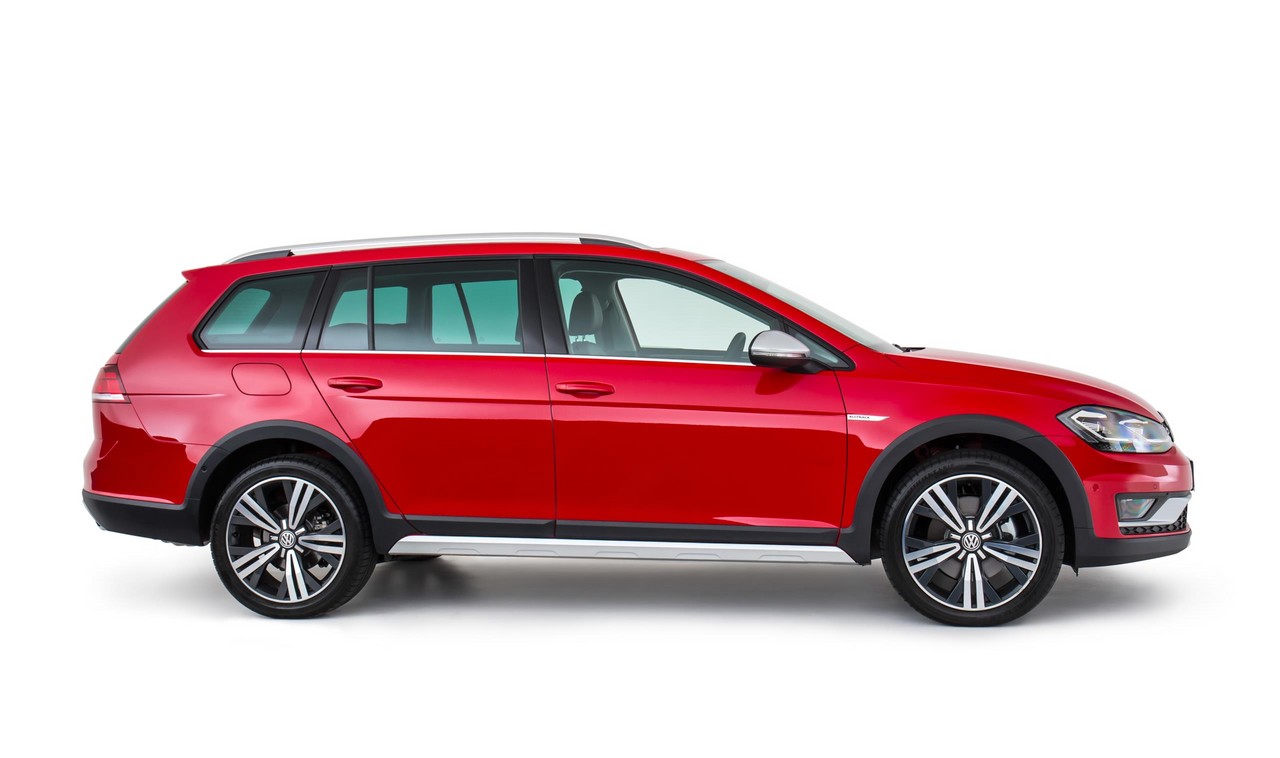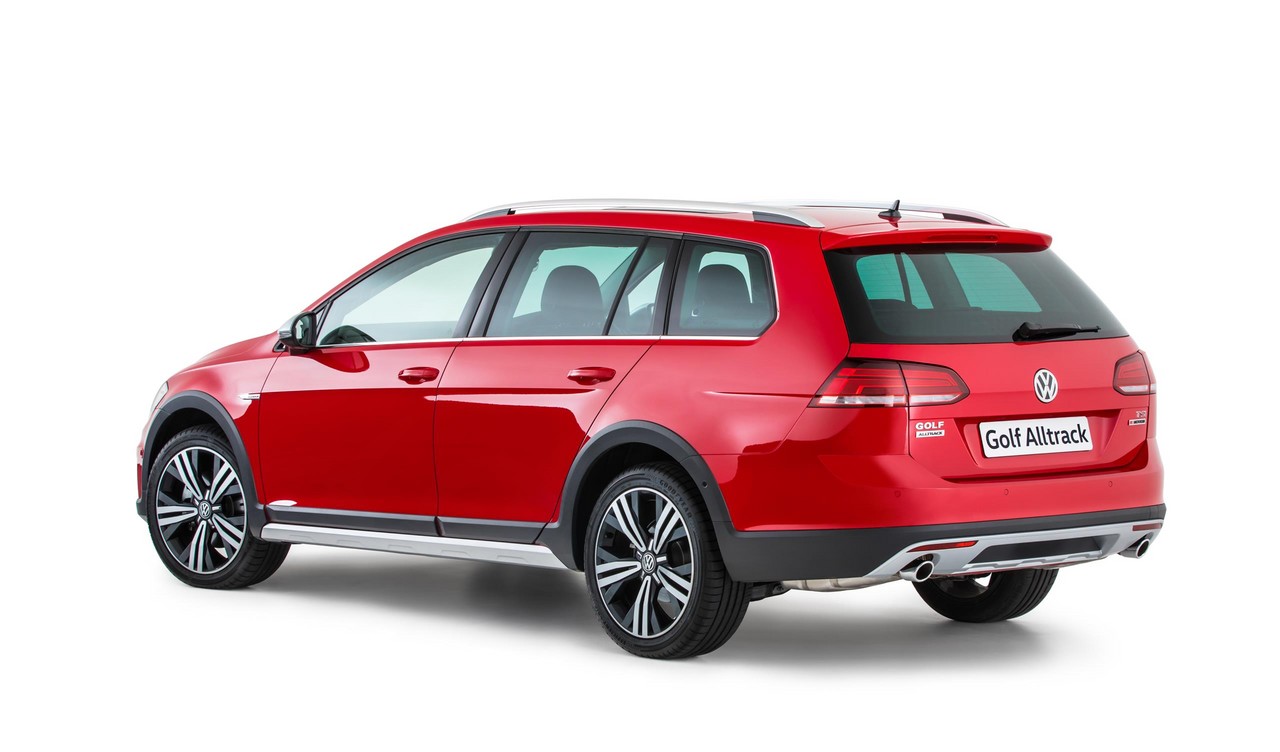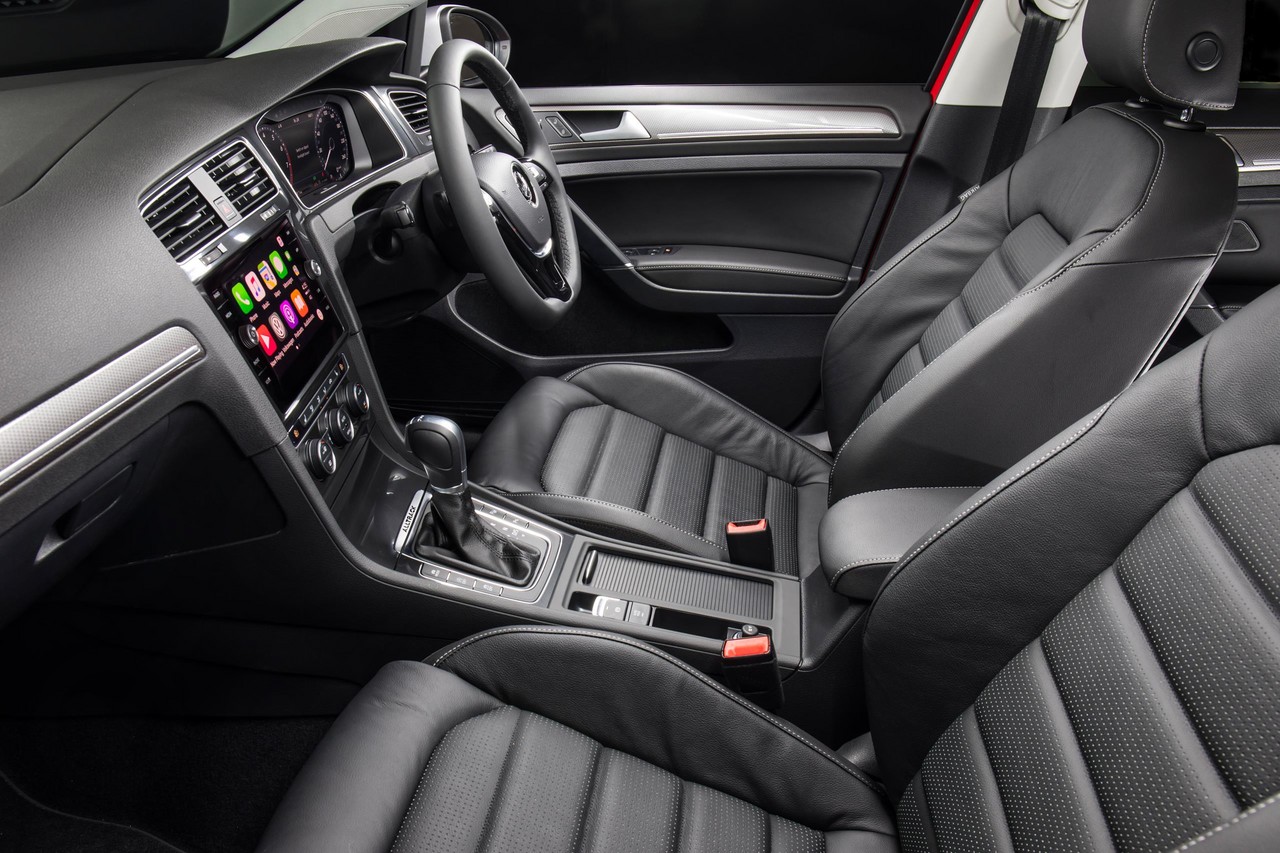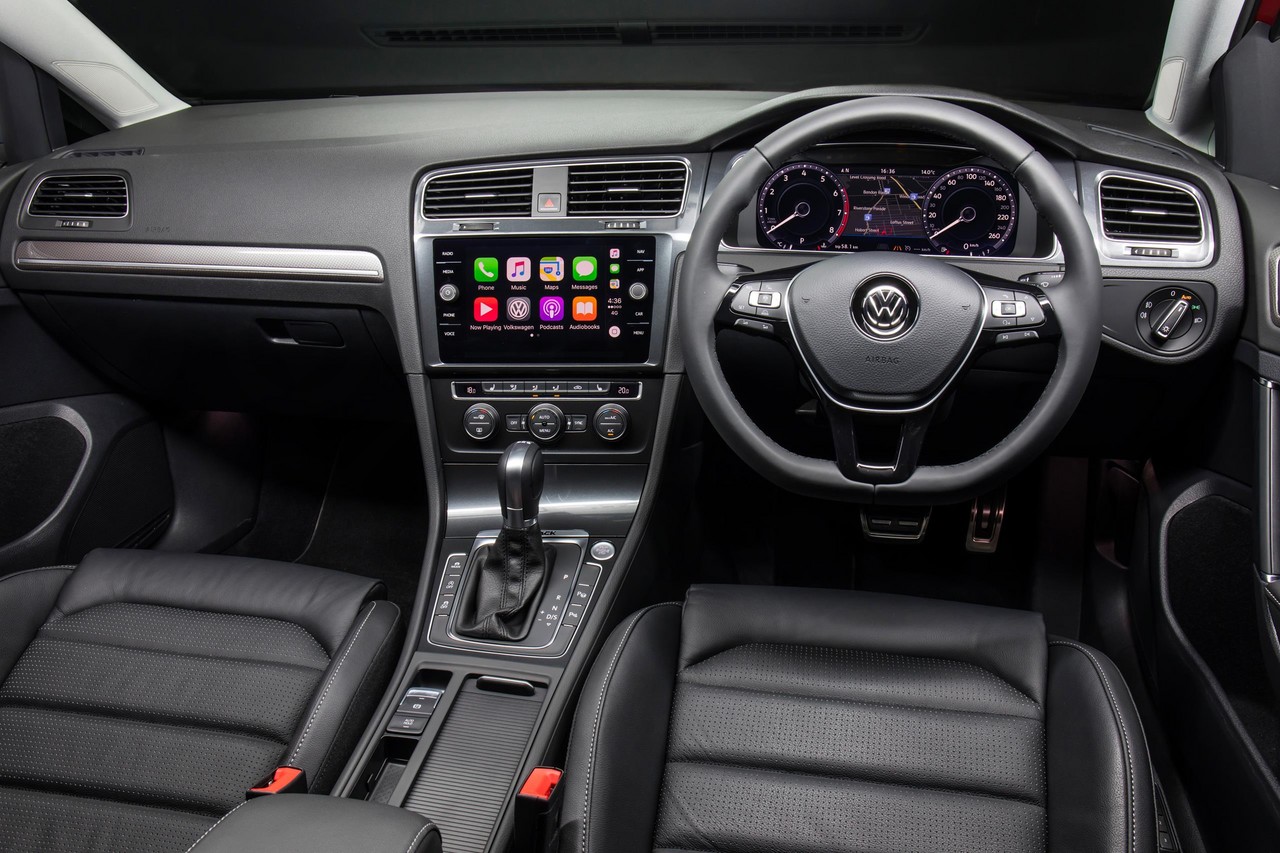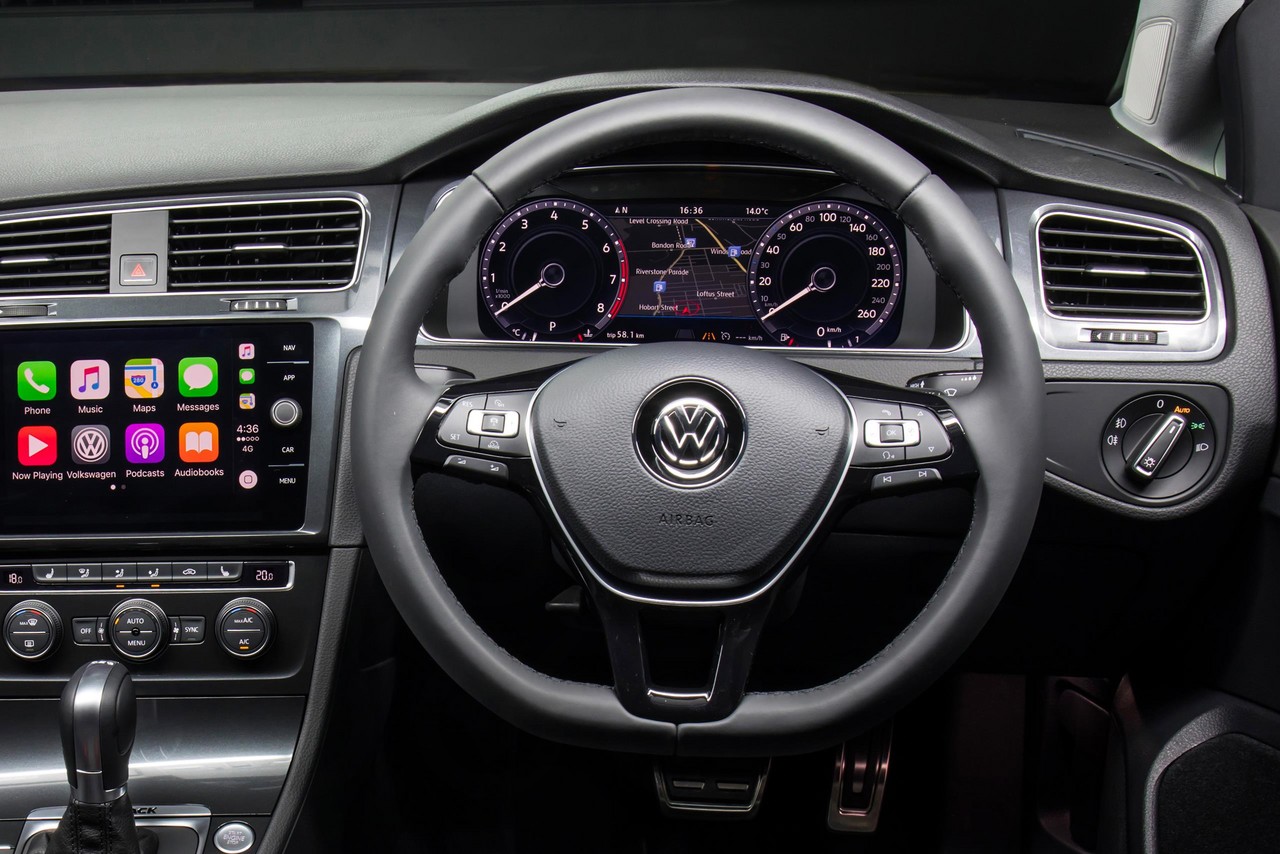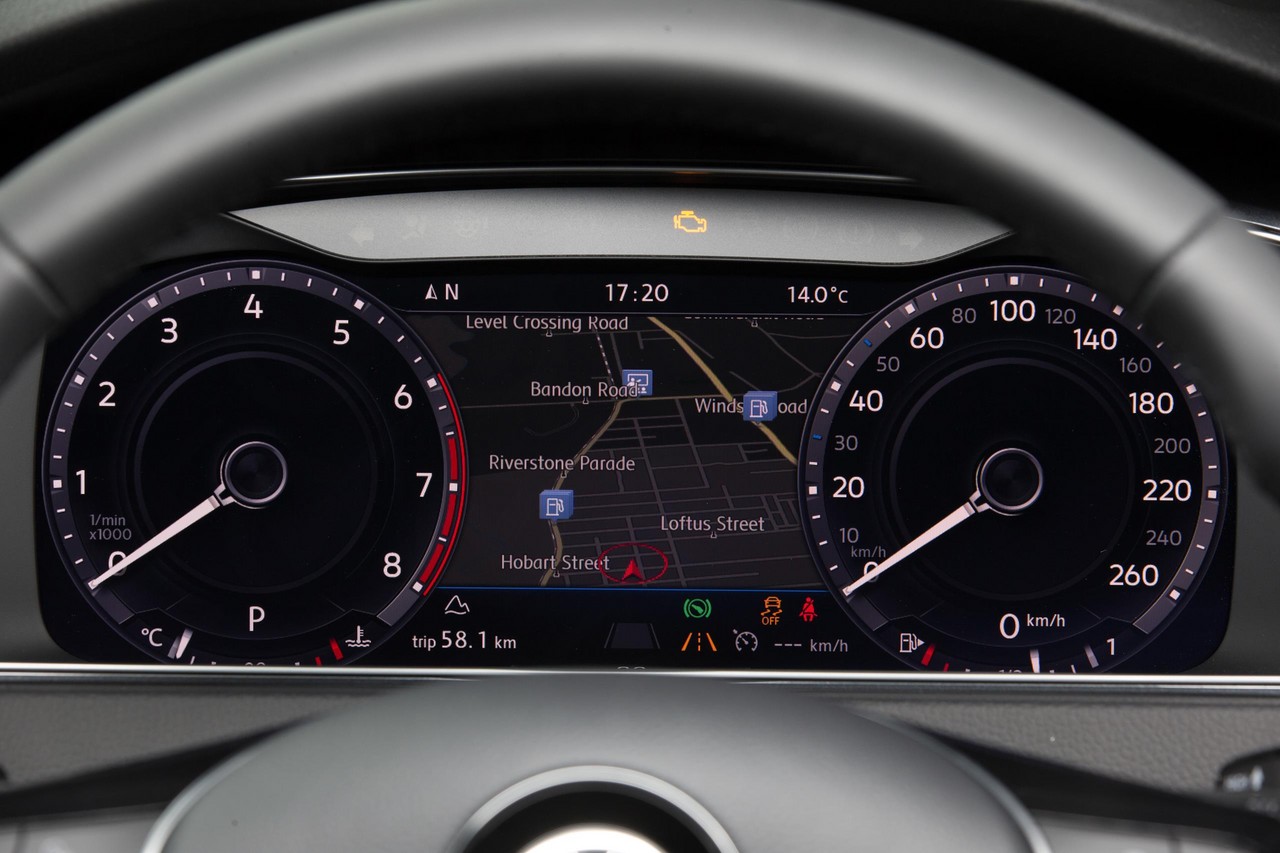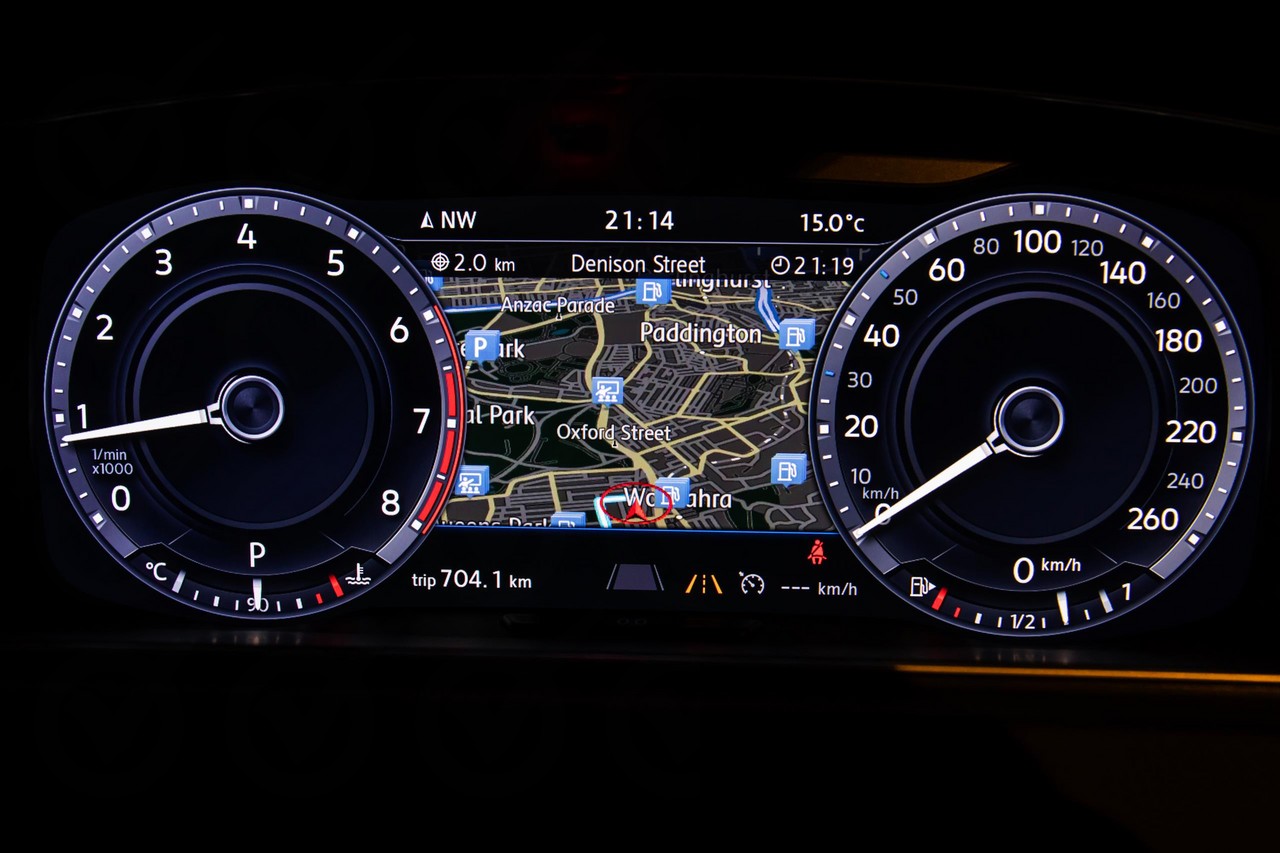
- Responsive 1.8-litre turbo petrol engine
- Impressive ride/handling balance
- Supportive front seats
- High standard of interior fit and finish
- Haldex all-wheel drive system and space-saver spare tyre not suited to off-road use
- Start/stop system and DCT conspire against consistent acceleration from rest
- Tyre noise
Overview
Released in Australia in July 2017, the Volkswagen Mk7.5 Golf Alltrack was an all-wheel drive wagon. Manufactured in Germany, the Volkswagen Mk7.5 Golf Alltrack was available with 2.0-litre turbocharged petrol (132TSI) and diesel (135TDI) engines that were mated to six- and seven-speed double clutch transmissions, respectively. To minimise fuel consumption, both engines had a Start/Stop system which enabled them to shut down when the Golf Alltrack was stationary in traffic.
In October 2018, the Mk7.5 Golf Alltrack range was revised as the 135TDI variants were withdrawn from the Australian market due to production constraints.
Comparison with Mk.7 Golf Alltrack
Compared to the Volkswagen Mk.7 Golf Alltrack , the Mk7.5 Golf Alltrack could be identified by its re-profiled bumpers, LED running lights, full LED tail-lights and alloy wheels designs. Whereas standard models were fitted with new halogen headlights, models previously fitted with xenon headlights upgraded to LED headlights. Inside, the Mk7.5 Golf Alltrack featured larger infotainment screens; the standard ‘Composition’ media system had an eight-inch display.
| Variant | Engine | Edition | Trans. | Peak power | Peak torque |
|---|---|---|---|---|---|
| 132TSI 4MOTION | 1.8-litre CJSB turbo petrol I4 | Standard, Premium |
6sp DSG | 132 kW at 4500 rpm | 280 Nm at 1350-4500 rpm |
| 135TDI 4MOTION | 2.0-litre DGCA turbo diesel I4 | Premium | 7sp DSG | 135 kW a 3500-4000 rpm | 380 Nm at 1750-3000 rpm |
Haldex V all-wheel drive system (‘4MOTION’)
As standard, the Volkswagen Mk7.5 Golf Alltrack was fitted with a Haldex V all-wheel drive system (Volkswagen’s ‘4MOTION’). The Haldex V system consisted of an electronically controlled and hydraulically actuated multi-plate clutch coupling that was located in front of the rear axle differential (at the end of the prop shaft). Under low loads or when coasting, the rear axle was decoupled to reduce fuel consumption. If, however, there was a loss of front wheel traction or such a loss was anticipated by on-board sensors, then an electro-hydraulic oil pump applied pressure to the clutch plates to transfer up to 50 per cent of the engine’s torque to the rear wheels (for a 50:50 front:rear torque split).
Body and dimensions
The Mk7.5 Golf Alltrack is underpinned by Volkswagen’s MQB (Modularer Querbaukasten) platform. Like the Volkswagen Mk.7 Golf Alltrack , the Mk7.5 Golf Alltrack was 4578 mm long, 1799 mm wide, 1496 mm tall and had a 2629 mm long wheelbase; ground clearance was 175 mm. Inside, cargo capacity was 605 litres (VDA method), though this increased to 1620 litres when the rear seats were folded down and luggage was filled to the roofline.
Suspension and steering
The Volkswagen Mk7.5 Golf Alltrack had MacPherson strut front suspension with lower A-arms and independent, four-link rear suspension; both the front and rear suspension had coil springs and an anti-roll bar.
The Volkswagen Mk7.5 Golf Alltrack had rack-and-pinion steering with electric power assistance; its turning circle was 10.9 metres.
Safety equipment
Standard safety equipment for the Volkswagen Mk7.5 Golf Alltrack included dual front airbags, a driver’s knee airbag, front side airbags, full-length curtain airbags, ABS, electronic brake force distribution, brake assist, electronic stability control, traction control and front seatbelts with pre-tensioners and load limiters.
As standard, the Volkswagen Mk7.5 Golf Alltrack is fitted with the following active safety technologies –
- Front Assist with Pedestrian Monitoring: used a radar sensor located behind the VW badge in the radiator grille to detect if the Golf Alltrack was closing too quickly on the vehicle ahead. If this occurred, Front Assist 1) provided audible and visual warnings to the driver; 2) brought the brake pads into contact with the brake discs and increased braking assistance to prepare for an emergency stop; and, 3) briefly applied the brakes (a ‘jolt’) to alert the driver. If the driver failed to respond, Front Assist would apply the brakes automatically to avoid or reduce the severity a collision;
- City Emergency Brake: an extension of Front Assist, City Emergency Braking operated at speeds up to 30 km/h and used a radar sensor and front camera to monitor the area ahead for vehicles and pedestrians. If a collision was anticipated, City Emergency Braking pre-charged the braking system, increase braking assistance and alert the driver via visual and audible warnings. If the driver failed to respond, the system would initiated autonomous emergency braking (AEB);
- Fatigue Detection: monitored driver behavior at speeds in excess of 65 km/h for signs of fatigue. If the driver exhibited signs of fatigue, a tone would sound and a warning would appear in the multi-function display; and,
- Multi-collision brake: after a collision, multi-collision brake would automatically apply the brakes for controlled deceleration to vehicle speed and the likelihood of a second collision.
Driver Assistance Package
As an $1800 option, the Volkswagen Mk7.5 Golf Alltrack could be specified with a Driver Assistance Package which included the following technologies –
- Adaptive Cruise Control (ACC): using a radar sensor, ACC could apply the vehicle’s brakes to reduce vehicle speed and maintain a pre-set distance to vehicle ahead. ACC could also cause the vehicle to accelerate back to its cruising speed when the road ahead cleared;
- Lane Assist (lane departure warning): using a camera to recognise lane markings, Lane Assist could detect unintentional lane drifting or changing and provide corrective steering actions for up to eight seconds. If the corrective steering actions were insufficient, the driver would be alerted via steering wheel vibrations;
- Park Assist 3.0: could detect parallel and right angle parking spaces and provide automated steering for the parking manoeuvres while the driver controlled vehicle speed, and when exiting a parallel parking space. In contrast to its predecessors, Park Assist 3.0 could provide automated steering for forward parking manoeuvres;
- Proactive occupant protection system: in a potential accident situation, the seatbelts would be tensioned and windows closed; and,
- Volkswagen’s ‘Active Info Display’: a 12.3-inch high-resolution display in place of the standard instrument cluster.
Euro NCAP testing
In Euro NCAP testing , the related Volkswagen Mk.7 Golf hatch received a five star safety rating which included a 94 per cent adult occupant protection rating and an 89 per cent child occupant protection rating. In the frontal offset crash test, occupant protection was generally assessed as good, though protection for the driver’s lower leg was rated as adequate. Maximum points were awarded in the side impact test though, in the more severe pole test, chest protection was rated as marginal and abdominal protection as adequate.
Features: Volkswagen Mk7.5 Golf Alltrack
Standard features for the Volkswagen Mk7.5 Golf Alltrack included 7.0J x 17-inch ‘Valley’ alloy wheels with 205/55 R17 tyres, Volkswagen’s ‘Composition’ media system with an eight-inch display, an eight speaker sound system, MP3/WMA/ACC-compatibility, 3.5 mm auxiliary and SD card inputs, Volkswagen’s ‘App-Connect’ USB input for smartphone integration (including Apple CarPlay, Android Auto and MirrorLink), Bluetooth mobile phone connectivity and audio streaming, dual-zone climate control air conditioning, ‘Summit’ cloth seat upholstery, cruise control with a programmable speed limiter, halogen headlights with LED daytime running lights, front fog lights with static cornering lights, a rear fog light, dusk-sensing headlights, rain-sensing wipers, front and rear parking sensors, a rear view camera with static guidance lines, steering wheel audio controls, a leather-wrapped steering wheel and gearshift knob, 40/60 split and folding rear seats, remote central locking with proximity key (i.e. keyless entry), power windows and heated mirrors, a kerb view function for the passenger door mirror when reversing, a height and reach adjustable steering wheel, height adjustable front seats, push-button start, an auto-dimming rear view mirror, an electromechanical parking brake, LED interior ambient lighting, tyre pressure monitoring, 12 volt power sockets in the centre console and luggage compartment, chrome roof rails, a trip computer and an immobiliser.
As standard, the Golf Alltrack was fitted with a ‘Driving Profile Selection’ function that enabled the driver to choose from five drive modes – Eco, Sport, Normal, Comfort and Individual – which adjusted steering assistance, throttle response and transmission programming.
Features: Volkswagen Mk7.5 Golf Alltrack Premium
Compared to the standard Golf Alltrack, the Golf Alltrack Premium was further equipped with Volkswagen’s ‘Discover Media’ audio and satellite navigation system (also with an eight-inch display), ‘Comfort’ front sport seats, ‘Vienna’ leather-appointed seat upholstery, individually heated front seats, LED headlights with dynamic cornering lights, carpet floor mats and a colour multi-function display. The Golf Alltrack Premium was also equipped with Volkswagen’s ‘Media Control’ app which enabled a tablet or smartphone to be used as a remote control for the vehicle’s infotainment system.
Sport Luxury Package
As a $2900 option, the Golf Alltrack Premium could be specified with a ‘Sport Luxury Package’ which consisted of 18-inch ‘Kalamata’ alloy wheels, a power adjustable driver’s seat with memory settings, steering wheel gearshift paddles, power folding door mirrors with memory function, a panoramic glass sunroof and rear privacy glass.
Specifications
- Specifications: Volkswagen Mk7.5 Golf Alltrack (July 2017)
- Specifications: Volkswagen Mk7.5 Golf Alltrack (September 2018, MY19)
